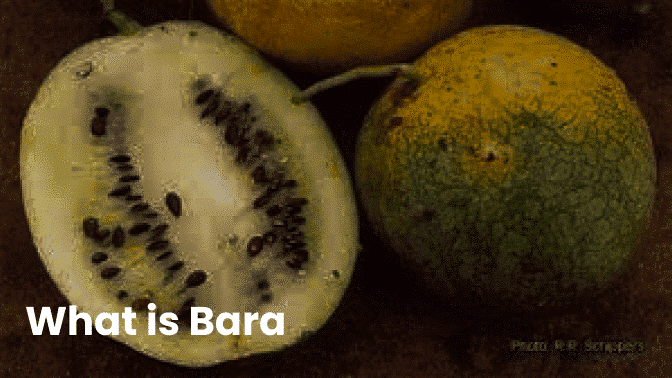Bara is a popular Japanese genre of manga and anime that features male characters with muscular builds and often focuses on homoerotic relationships between men. The term bara is derived from the Japanese word "rose," which is a common symbol of homosexuality in Japan.
Bara has a long history in Japan, with its roots in the underground manga scene of the 1960s and 1970s. In those early days, bara was often associated with pornography and was seen as a taboo genre. However, as the genre developed, it began to focus more on the relationships between male characters, rather than just the sexual aspects.
Today, bara has become more mainstream in Japan, with many popular manga and anime series featuring bara characters and themes. Some of the most well-known examples include "JoJo's Bizarre Adventure," "Berserk," and "Fist of the North Star."
Bara has also gained a following outside of Japan, particularly in the LGBTQ+ community. Many fans appreciate the genre for its representation of queer relationships and its celebration of male sexuality. However, others have criticized the genre for perpetuating harmful stereotypes about gay men, such as the idea that all gay men are hypermasculine and muscular.
Despite these criticisms, bara continues to be a popular and influential genre in both Japan and around the world. Its unique style and focus on male relationships make it a fascinating and complex part of modern Japanese culture.
Bara characters are a distinctive feature of the genre, with their muscular physiques and hypermasculine traits setting them apart from characters in other genres.
Typical Bara Character Designs
Bara characters are often depicted as having muscular builds, with broad shoulders, chiselled abs, and powerful arms and legs. They may also have exaggerated facial features, such as prominent jaws and defined cheekbones. This muscularity is often emphasized through tight clothing or even nudity, showcasing the character's impressive physique.
In addition to their physical attributes, bara characters often display hypermasculine traits such as aggression, dominance, and competitiveness. These traits may be expressed through their interactions with other characters, as well as in their internal dialogue and monologues.
Common Character Archetypes
Bara characters often fit into specific archetypes, each with their own set of personality traits and relationships with other characters. Some of the most common archetypes include:
- Seme: The dominant partner in a homosexual relationship, often depicted as strong, assertive, and confident. Some characters are typically the ones who initiate physical and emotional intimacy with their partners.
- Uke: The submissive partner in a homosexual relationship, is often depicted as physically smaller and more delicate than their same partners. Uke characters may display more emotional vulnerability and may be more hesitant to initiate intimacy.
- Muscle Bear: A sub-genre of bara that focuses on older, larger, and more bear-like characters. Muscle bears may still be muscular and physically impressive, but they also have more body hair and a stockier build.
- Bishounen: While not as common in bara as in other genres, bishounen characters are still sometimes featured. These characters are often younger and more androgynous than other bara characters, with less emphasis on muscularity and more focus on beauty and elegance.
Common Bara Tropes
Bara stories often incorporate common tropes and themes, some of which include:
- Love Triangles: A common trope in many genres, love triangles involve three characters who are romantically involved with each other in some way. In bara, love triangles may involve two seme characters vying for the affection of a single uke or a uke who is torn between two seme partners.
- Forbidden Love: Similar to love triangles, forbidden love is a common trope in many genres. In bara, this may involve a seme and uke who are from different social classes, or who are unable to be together for other reasons.
- Coming Out: While not a trope unique to bara, coming out is often depicted in bara stories as characters navigate their sexuality and relationships with others.
- Action and Adventure: Many bara stories also feature action and adventure elements, with characters engaging in battles, quests, or other exciting activities.
Bara characters are a distinctive feature of the genre, with their muscular builds and hypermasculine traits setting them apart from characters in other genres. Common character archetypes include the dominant seme, the submissive uke, the older muscle bear, and the elegant bishounen.
Bara, a genre of Japanese media featuring homoerotic relationships between hypermasculine men, has been a popular theme in manga and anime for several decades.
Examples of Popular Bara Series
Some of the most well-known and popular bara series include:
- "JoJo's Bizarre Adventure": This long-running manga and anime series features an extensive cast of muscular male characters engaging in epic battles with supernatural powers. The series has been popular for its unique art style, intricate plot, and over-the-top action sequences.
- "Fist of the North Star": This classic manga and anime series is set in a post-apocalyptic world where the main character, Kenshiro, uses his incredible strength and martial arts skills to fight against evil warlords and save innocent people. The series is known for its iconic catchphrases and intense fight scenes.
- "Berserk": This dark fantasy manga and anime series follows the story of a mercenary named Guts as he battles demons and struggles to maintain his humanity in a brutal and unforgiving world. The series has been praised for its complex characters and exploration of themes such as revenge, betrayal, and the nature of evil.
Evolution of Bara in Manga and Anime
Over the years, the portrayal of bara relationships in manga and anime has evolved significantly. In the early days of the genre, bara was often associated with pornography and featured explicit sexual content.
However, as the genre gained more mainstream recognition, the focus shifted towards developing complex characters and exploring themes such as love, loss, and self-discovery.
Today, many bara series is aimed at a wider audience and may feature elements such as action, adventure, and comedy, in addition to romantic relationships between male characters. The portrayal of these relationships has also become more nuanced, with a greater emphasis on emotional and psychological depth.
Comparison to Other Genres
While bara is often compared to other genres featuring homoerotic relationships, such as yaoi and shounen-ai, there are some key differences between them.
Yaoi and shounen-ai typically feature younger, more androgynous male characters and often focus on romantic and sexual relationships between them.
In contrast, bara characters are typically older and more muscular, with a greater emphasis on physical strength and aggression.
Additionally, while yaoi and shounen-ai may be aimed at a female audience, bara is typically aimed at a male audience. However, this is not to say that bara is exclusively enjoyed by men, and there are many fans of the genre from all walks of life.
Criticism of Bara
Critics of the genre have argued that bara perpetuates harmful stereotypes, such as the idea that all gay men are hypermasculine and sexually aggressive. Additionally, some argue that the genre is overly focused on sex and fetishization, rather than exploring the emotional and psychological aspects of relationships.
Furthermore, critics have also pointed out that bara can be exclusionary to individuals who do not fit the hypermasculine ideal, such as those who are more androgynous or feminine. This can lead to feelings of isolation and inadequacy among LGBTQ+ individuals who do not fit the mould.
Positive Use of Bara for Representation and Advocacy
Despite the criticism, bara has also been used for positive representation and advocacy within the LGBTQ+ community. For example, some argue that the genre can be empowering for LGBTQ+ individuals who may feel marginalized or stigmatized in mainstream media.
Bara can provide a space for the representation of same-sex relationships and offer a form of validation for individuals who identify with the hypermasculine ideal.
Additionally, some creators have used bara to subvert traditional gender roles and challenge societal expectations. By portraying same-sex relationships between hypermasculine characters, they are breaking down the stereotypes of what it means to be a "man" or a "woman."
Conclusion
The LGBTQ+ community's reception of bara has been complex, with some appreciating the representation it offers while others argue that it is exclusionary and does not accurately represent LGBTQ+ experiences.
However, bara has also been used for positive representation and advocacy, providing a space for empowerment and challenging traditional gender roles.
The impact of bara on the LGBTQ+ community is nuanced and multifaceted, and it is important to remain critical of harmful stereotypes while also recognizing its potential for positive representation.








